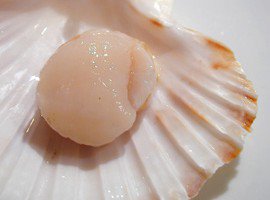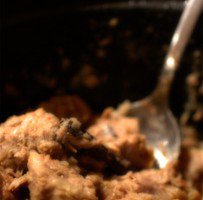A few weeks ago, I read Tara Austen Weaver‘s book The Butcher and the Vegetarian, a memoir in which she writes about being brought up as a vegetarian and the challenges she faced as an adult, when she had to start cooking meat for herself to try to recover from a serious health issue.
 It’s a very good read, witty and honest, and even for readers like me, who don’t share her dietary background or meat-handling angst, there are a lot of elements to relate to in her story. I especially enjoyed the sections where she addresses the political and ethical sides of the meat question in a remarkably level and dispassionate way.
It’s a very good read, witty and honest, and even for readers like me, who don’t share her dietary background or meat-handling angst, there are a lot of elements to relate to in her story. I especially enjoyed the sections where she addresses the political and ethical sides of the meat question in a remarkably level and dispassionate way.
A number of things she wrote stayed with me after I’d turned the last page, but there is one short passage in particular, early on in the book (p.31), in which her brother gives a technique for testing the doneness of red meat. It’s a small thing, but I liked the tip so much I thought I would, in turn, share it with you:
“Put the tips of your first finger and thumb together lightly, then use your opposite hand to squeeze the fleshy bit of the palm just below the base of the thumb. That is the consistency of rare meat. If you switch to thumb and second finger, the pad of your hand actually feels more solid, and that’s the texture of medium-rare. Thumb and third finger is medium; thumb and pinky is well done. Clearly this is what they are talking about when they say opposable thumbs are a sign of our evolution.”
Perhaps it’s a well-known trick — see below — but it was new to me, and of course I found myself, as I’m sure you just did, joining my fingers and prodding the flesh of my hand approvingly as I read through the paragraph. I don’t know that it can be assumed we all have the same muscle tone in our hands, but at least it’s a (relatively) constant frame of reference for each cook.
By an amazing stroke of synchronicity, Guillaume Long, whose illustrator’s blog I pointed you to earlier this week, recently illustrated that very same tip, as given to him by his swimming buddy, who happens to be a professional cook.
And if you’d prefer a real-life demo, a commenter to that same post linked to a video on the French recipe site Marmiton that shows the hand movement.
~~~
On an unrelated note, I’d like to point out a new feature in the comments section on C&Z: each comment now comes with a “reply” link that you can click on if you’d like to react or respond to that particular commenter. Your comment will appear right below it, so the discussion is more clearly laid out for all to follow. I hope you find that feature useful; please let me know if you encounter any problem while using it.













